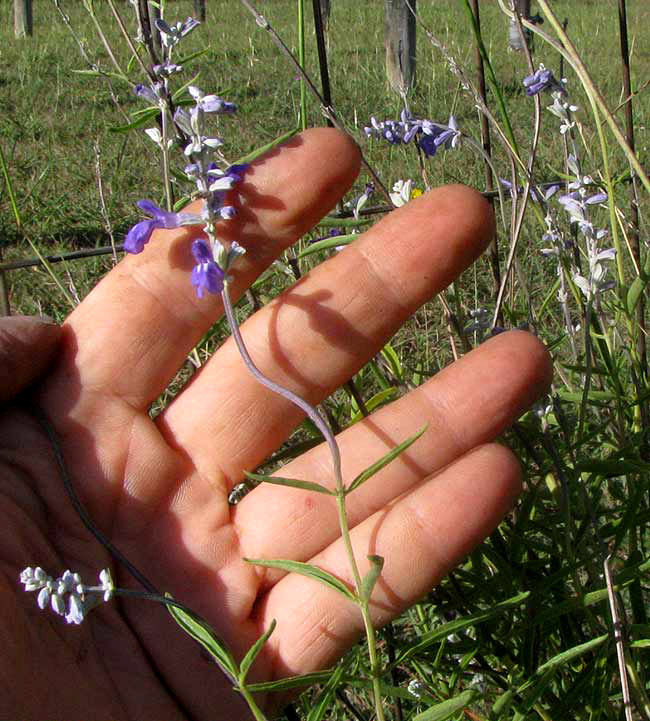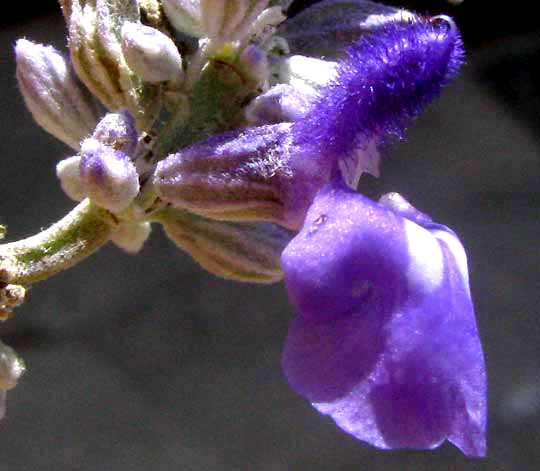Excerpts from Jim Conrad's
Naturalist Newsletter

from the the September 30, 2012 Newsletter issued from the valley of the Dry Frio River in northern Uvalde County, southwestern Texas, on the southern border of the Edwards Plateau; elevation ~1750m (~5750 ft); N29.62°, W99.86°; USA
MEALY SAGE
When I arrived here a pretty, purple-flowered mint grew in several places along my garden deer-fence so I assumed it had been planted by the previous tenant. You can see a flowering sprig of it above.
As soon as I began wandering around, however, it turned up on limestone slopes along the river and elsewhere, so maybe it was native. Now I've figured it out. Take a look at a flower and see if you can guess what famous group of Mint Family plants it belongs to, below:

It's a sage! It's the Mealy Sage, or Mealycup Sage, SALVIA FARINACEA, the Mealy part of its name referring to the white, clumpy fuzz on the flower's calyx and upper stem. Another unusual feature of the flower is the covering of long, blue hairs on the corolla's upper lip, and the white spots on the broad lower lip.
It turns out that Mealy Sage is a native wildflower pretty enough for horticulturalists to have bred several cultivars from it, such as the 'Blue Bedder,' which only grows to about 1 ft (0.3 m) high, and the most popular one, 'Victoria', which becomes a bushy mound about 2.5 ft high (0.8 m).
In the wild Mealy Sage is distributed through northern Mexico and the arid south-central US states.